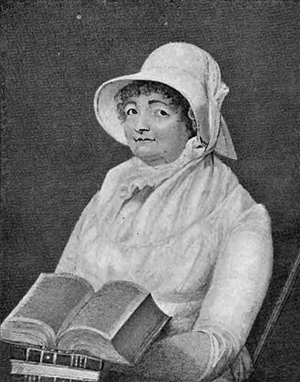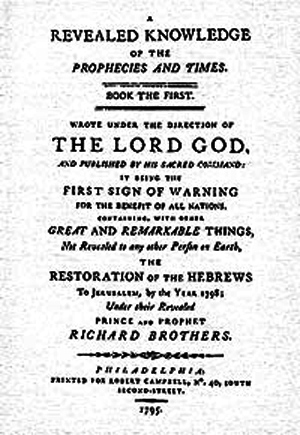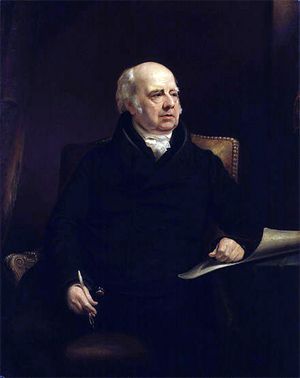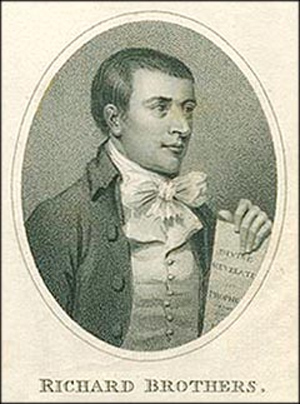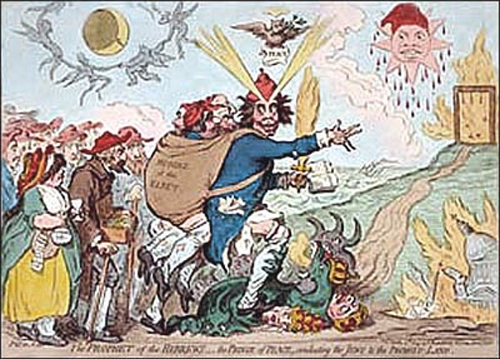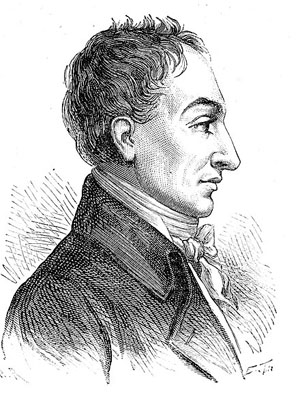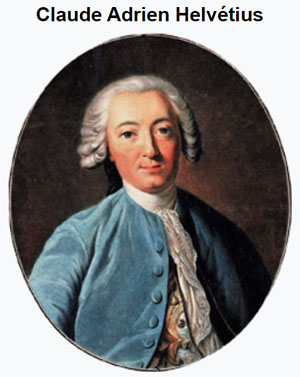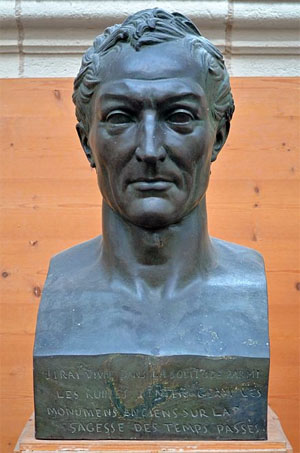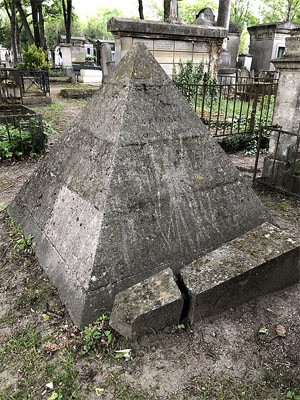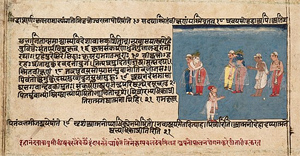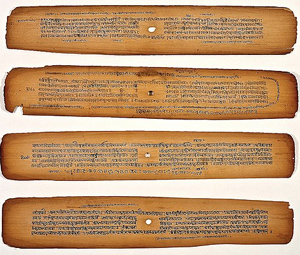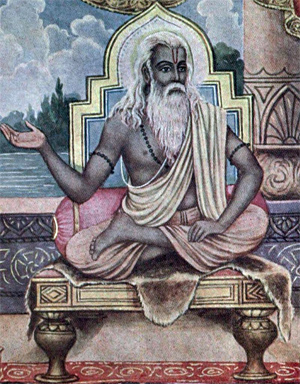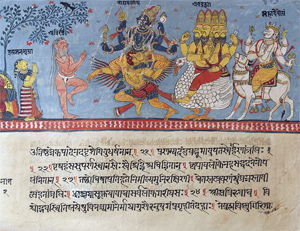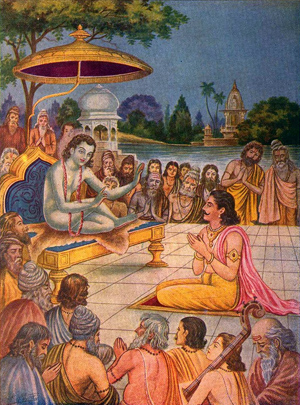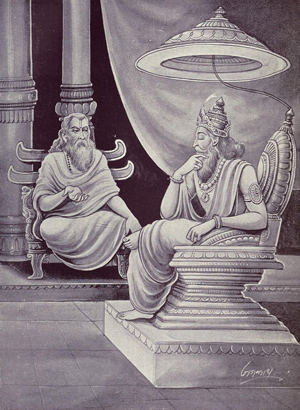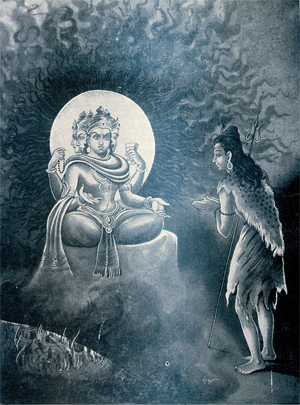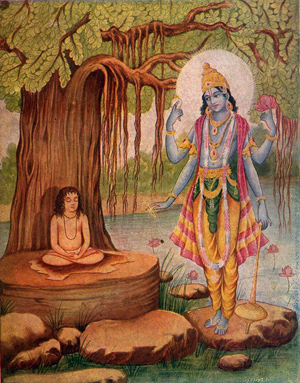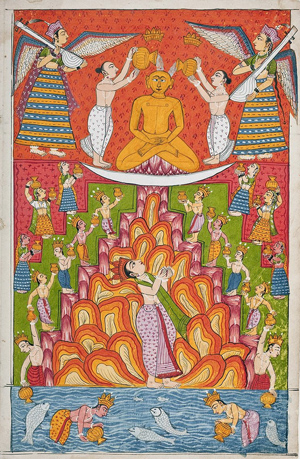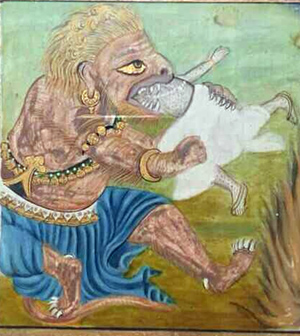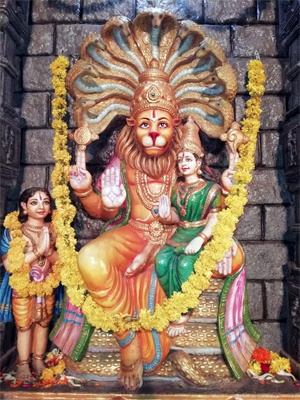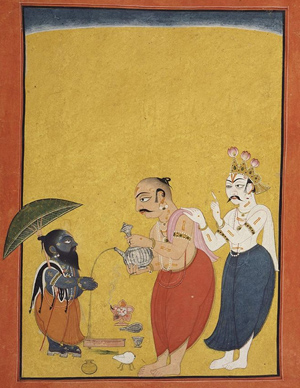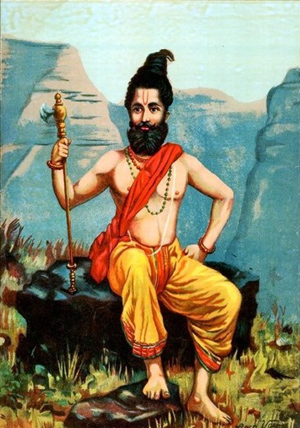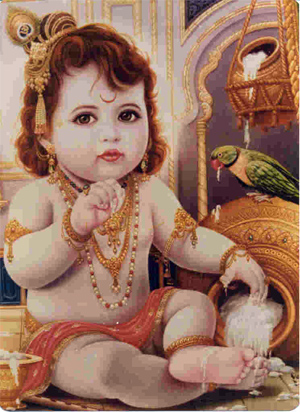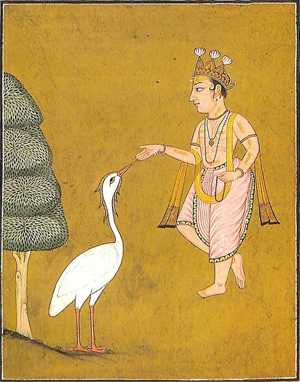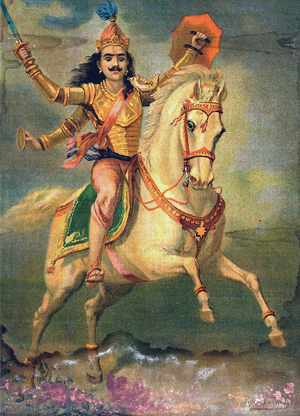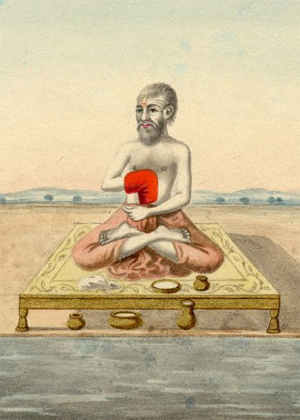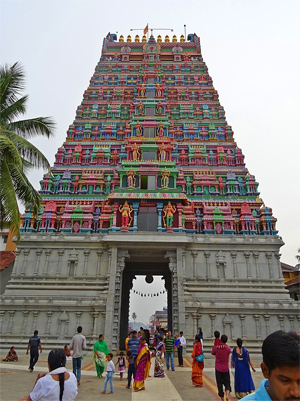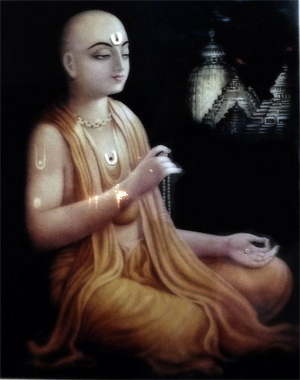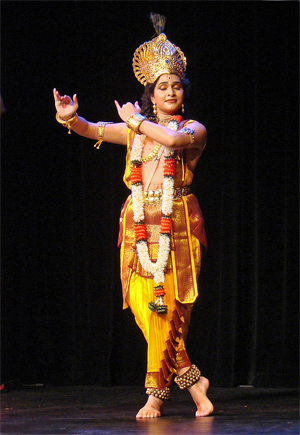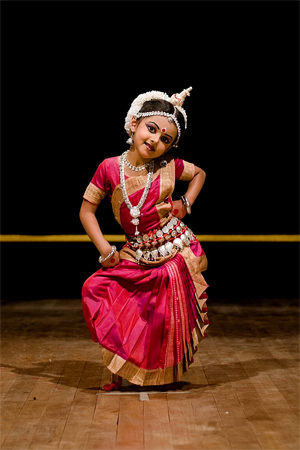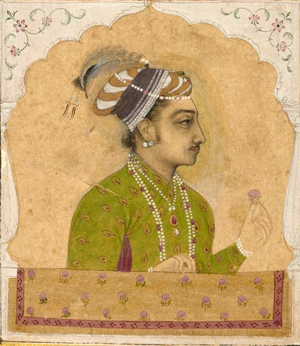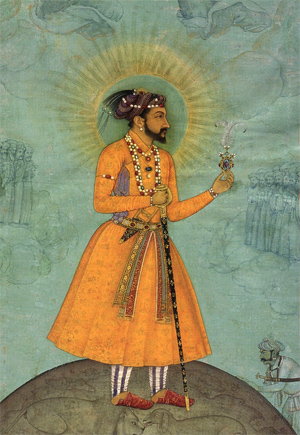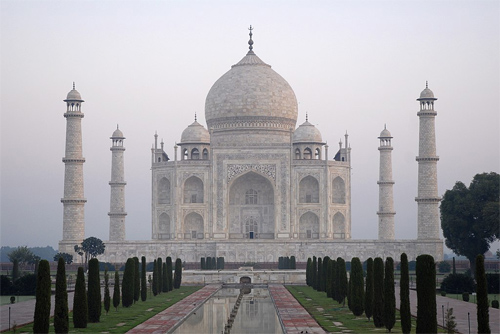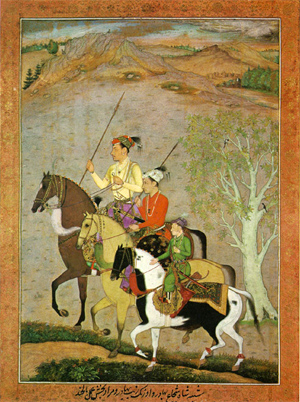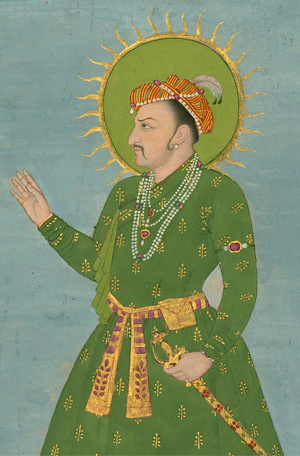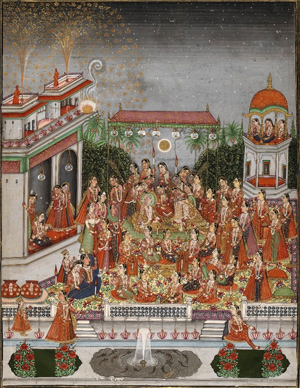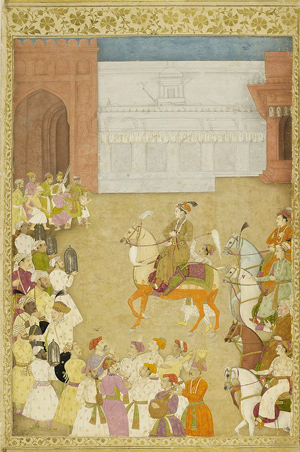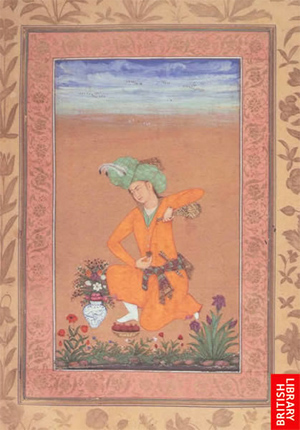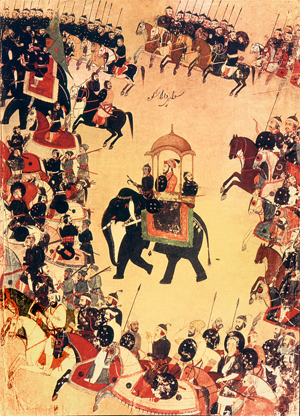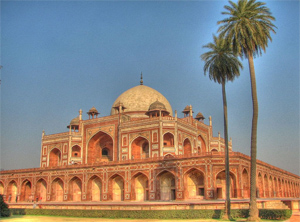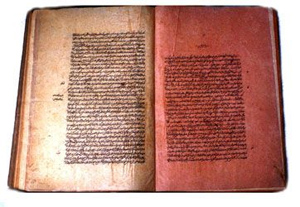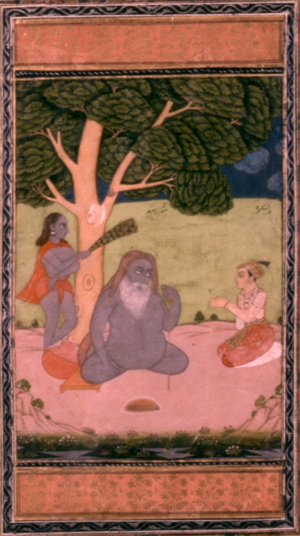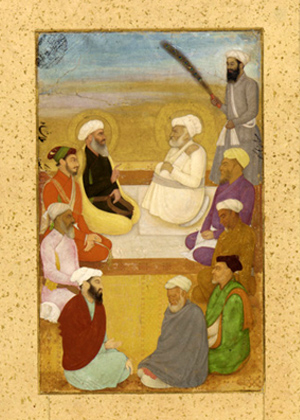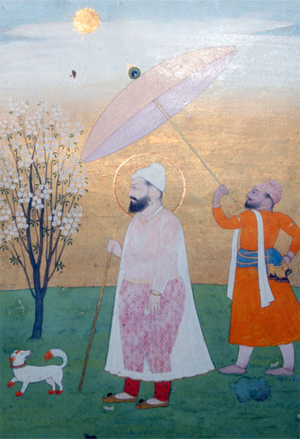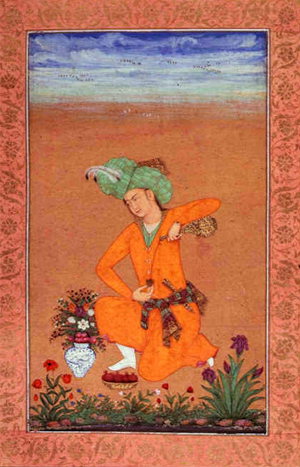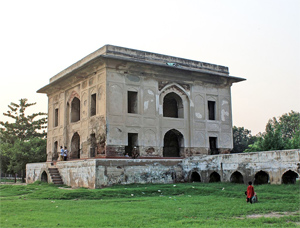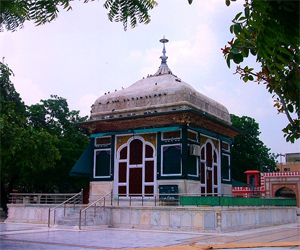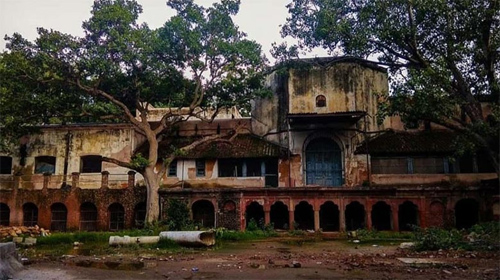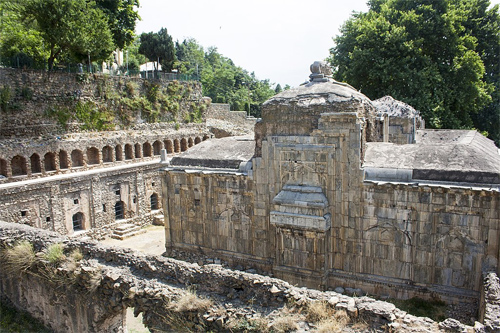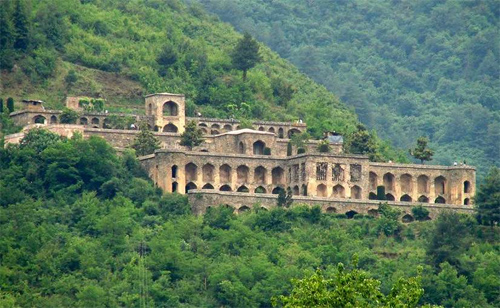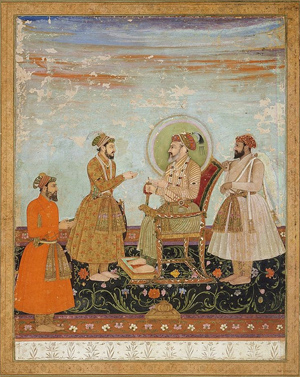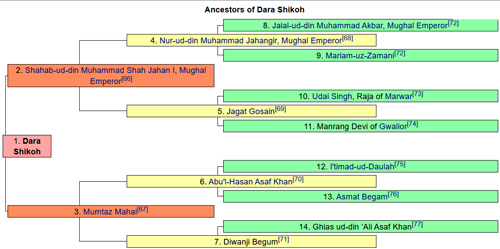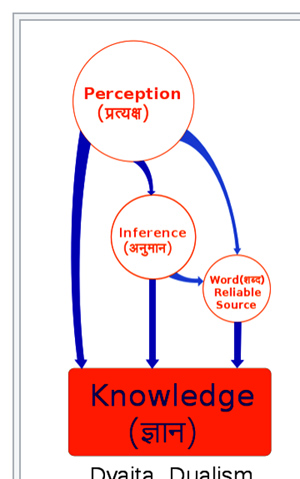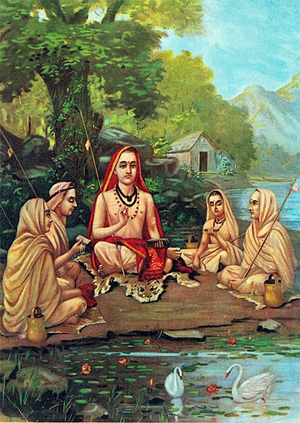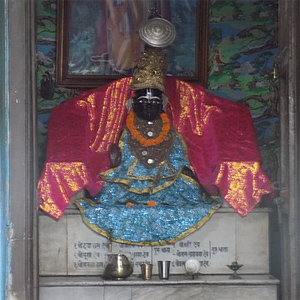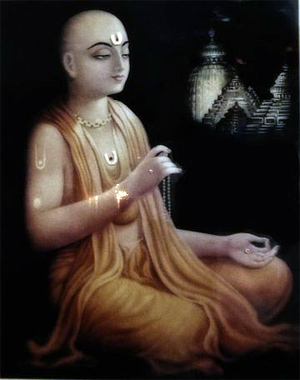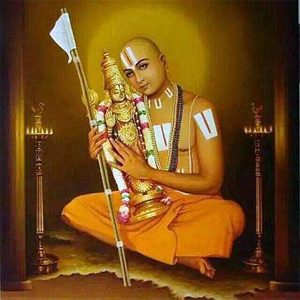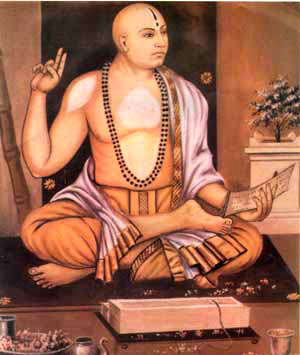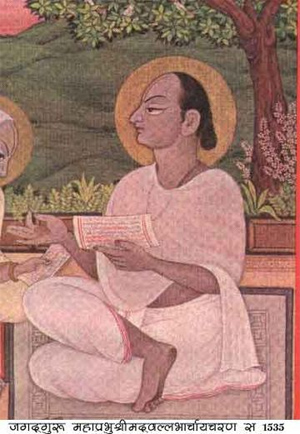by Wikipedia
Accessed: 1/30/21
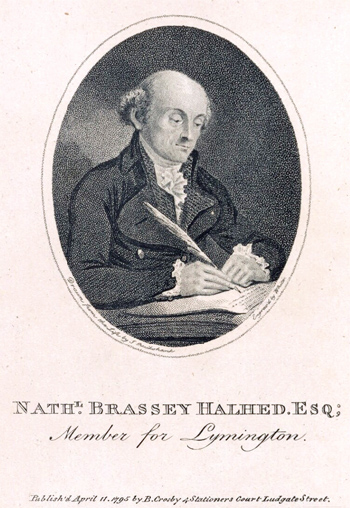
Nathaniel Brassey Halhed
Born: 25 May 1751, Westminster
Died: 18 February 1830
Occupation: Orientalist and philologist
-- The Love Epistles of Aristaenetus, Translated by Nathaniel Brassey Halhed
-- Prostitution in Ancient India, by Sukumari Bhattacharji
-- Nathaniel Brassey Halhed, by Wikipedia
-- A Code of Gentoo Laws, Or, Ordinations of the Pundits, From a Persian Translation, Made From the Original, Written in the Shanscrit Language, by Nathaniel Brassey Halhed
-- Testimony of the Authenticity of the Prophecies of Richard Brothers, and of His Mission to Recal the Jews, by Nathaniel Brassey Halhed, M.P.
Nathaniel Brassey Halhed (25 May 1751 – 18 February 1830) (Bengali: হালেদ, romanized: "Haled") was an English Orientalist and philologist.[1]
Halhed was born at Westminster, and was educated at Harrow School, where he began a close friendship with Richard Brinsley Sheridan. While at Oxford he undertook oriental studies under the influence of William Jones. Accepting a writership in the service of the East India Company, he went out to India, and there, at the suggestion of Warren Hastings, translated the Hindu legal code from a Persian version of the original Sanskrit. This translation was published in 1776 as A Code of Gentoo Laws. In 1778 he published a Bengali grammar, to print which he set up the first Bengali press in India.[2]
In 1785 Halhed returned to England, and from 1790–1795 was Member of Parliament for Lymington, Hants. For some time he was a disciple of Richard Brothers, and a speech in parliament in defence of Brothers made it impossible for him to remain in the House of Commons, from which he resigned in 1795. He subsequently obtained a home appointment under the East India Company. He died in London on 18 February 1830.[2]
Early life
Nathaniel Brassey Halhed was born in a merchant family to William Halhed, a bank director, on 25 May 1751 and christened in St Peter le Poer, Old Broad Street; his mother was Frances Caswall, daughter of John Caswall, Member of Parliament for Leominster. He went to Harrow School from the age of seven to seventeen.[3]
Halhed entered Christ Church, Oxford on 13 July 1768, at the age of 17.[4] He remained there for three years but did not take a degree. William Jones had preceded him from Harrow to Oxford and they shared an intellectual relationship. At Oxford he learnt some Persian.[3]
Halhed's father was disappointed in him and decided to send him to India under the employment of the East India Company through his connections. His petition for a writership was granted by Harry Verelst. Appointed on 4 December 1771, Halhed was forewarned and had learned accounting.[5]
In India
Halhed was first placed in the accountant general's office under Lionel Darrell. He was next used as a Persian translator, and was sent to Kasimbazar for practical experience, and also to learn about the silk trade, by William Aldersey. It was in Kasimbazar that Halhed acquired Bengali, for dealing with the aurungs (weaving districts).[6] In Bengal he had several romantic interests: Elizabeth Pleydell, a certain Nancy, Diana Rochfort, and Henrietta Yorke.[7]
Halhed became one of Warren Hastings's favorites, and a believer in his approach to Indian affairs. On 5 July 1774 the Governor asked for an assistant for Persian documents, in addition to the munshis, and Halhed was appointed.
Marriage
After wooing several accomplished women, Halhed married (Helena) Louisa Ribaut, stepdaughter of Johannes Matthias Ross, the head of the Dutch factory at Kasimbazar when Halhed was stationed there. The betrothal probably took place in 1775.[8]
Association with Warren Hastings
When Hastings then nominated him for the post of Commissary General in October 1776, however, there was serious resistance, and Halhed found his position untenable.[9]
Leaving Bengal, Halhed went to Holland, and on to London. Financial reasons forced him to consider a return to India, but he tried to do so without overt support from Hastings. On 18 November 1783 he asked the Company's directors to appoint him to the committee of Revenue in Calcutta. He was successful, but not in dissociating himself from Hastings. He returned to India as a reputed Englishman with a wife and black servant, but when he reached Calcutta, Hastings was in Lucknow.[10]
Halhed presented his credentials to Edward Wheler, the acting governor-general, but there was no vacancy in the committee and no other appointments could be made without Hastings. Then summoned by Hastings to Lucknow, he made a futile journey there, since Hastings had by then decided to leave for England and was bound for Calcutta.[11]
Hastings was planning to bring supporters to England, and wanted to have Halhed there as an agent of the Nawab Wazir of Oudh. At this point Halhed threw in his lot with Hastings.[11]
Support for Hastings and Brothers
Halhed therefore returned to England, on 18 June 1785, identified as a close supporter of Hastings. The political context was the rise in 1780–4 of the "Bengal Squad", so-called.[12]
The "Bengal Squad" was, in the first place, a group of Members of Parliament. They looked out for the interests of East India Company officials who had returned to Great Britain. From that position, they became defenders of the Company itself.[13] The group that followed Hastings to England consisted of: Halhed, David Anderson, Major William Sands, Colonel Sweeney Toone, Dr. Clement Francis, Captain Jonathan Scott, John Shore, Lieutenant Col. William Popham, and Sir John D'Oyly.[14] This group is called by Rosane Rocher the "Hastings squad" or "Bengal squad".[15] That follows the contemporary practice of identifying the "Squad" or "the East Indians" with the backers of Hastings.[12]
Edmund Burke brought 22 charges against Hastings in April 1786, and Halhed was in the middle of the defence. For the Benares charge, Halhed had drafted a reply for Scott, but it was not in accord with Hastings's chosen line. He also cast doubt on some of Hastings's account when he was called on to testify. As a result, Halhed became unpopular with the defence team.[16]
Halhed began to look for a parliamentary career: his choice of enemies made him a Tory. His first candidature, at Leicester in 1790, failed and cost him a great deal. He succeeded in acquiring a seat in May 1791 at the borough of Lymington, in Hampshire.[17] His life was changed in 1795 by Richard Brothers and his prophecies. A revealed knowledge of the Prophecies and Times appealed to Halhed and resonated with the style of antique Hindu texts. [18] He petitioned for Brothers in parliament when he was arrested for criminal lunacy. Unsuccessful, he damaged his own reputation.[19]
Richard Brothers (25 December 1757 – 25 January 1824) was an early believer and teacher of British Israelism, a theory concerning the Lost Ten Tribes of Israel...
He entered the Royal Navy and served under Keppel and Rodney. In 1783, he became lieutenant, and was honourably discharged on 28 July 1783, receiving a pension which amounted to half-pay (54 pounds per year). He then travelled on the continent of Europe and later married Elizabeth Hassall in 1786. His marriage was reported as being "unhappy" and so he returned to service in the Royal Navy.
Because he came to believe that military service was not compatible with his new calling to serve Christianity, in 1789 he once again left the Navy. Built upon the principle of individual revelation, Brothers believed that he could not serve the King as head of the Church of England.
In 1791, he began to question the oath he had been required to take for receipt of his military half-pay, and he found himself with little income as a result of his subsequent actions. Brothers then divided his time between the open air and the workhouse, where he developed the idea that he had a special divine commission. Brothers claimed to hear the voice of an attending angel which proclaimed to him the fall of Babylon the Great, which was in fact London. Apparently upon Brothers's plea for mercy, God decided to spare London for a time and the destruction was halted. Around this time, Brothers was also expectant of a heavenly lady who would descend from the clouds showering him with money, love and happiness. In February 1792 Brothers declared himself a healer and claimed he could restore sight to the blind. He drew large crowds, but not due to his healing ability as much as his small gifts of money to those he prayed for.
In 1793 Brothers declared himself to be the apostle of a new religion. He began to see himself as possessing a special role in the gathering of the Jews back into Palestine, in particular, the "Jews" who were hidden amongst the population of Great Britain. In similarity to modern British Israelists, Brothers asserted that the "hidden Israel" had no notion of its biological lineage and that part of his role would be to teach them of their true identity and lead them to the land of Canaan. Brothers proclaimed himself to be Prince of the Hebrews, literal descendant of the Biblical House of David, and the Nephew of the Almighty, who would rule over Israel until the return of Jesus Christ. Brothers declared he would achieve all this using a rod he had fashioned from a wild rosebush, with which he would perform miracles, as Moses had done.
All this was declared in the first British Israelist publication in 1794:A REVEALED KNOWLEDGE OF THE PROPHECIES AND TIMES, Book the First, wrote [sic] under the direction of the LORD GOD and published by His Sacred Command, it being the first sign of Warning for the benefit of All Nations; Containing with other great and remarkable things not revealed to any other Person on Earth, the Restoration of the Hebrews to Jerusalem by the year of 1798 under their revealed Prince and Prophet (i.e., Richard Brothers). London, Printed in the year of Christ 1794.
Brothers began to attract quite a following, but due to his rejection of organisational work, and eccentric nature, he did not develop any sort of social movement. In consequence of prophesying the death of the King and the end of the monarchy, he was arrested for treason in 1795, and imprisoned on the grounds of being criminally insane. His case was, however, brought before Parliament by his ardent disciple, Nathaniel Brassey Halhed, an orientalist and a member of the House of Commons. As a result Brothers was removed to a private asylum in Islington.
While he was in the private asylum Brothers wrote a variety of prophetic pamphlets which gained him many believers. Amongst his supporters was William Sharp, the engraver. Some of his political predictions (such as the violent death of Louis XVI) seemed to be proof that he was inspired. But when Brothers predicted that, on 19 November 1795 he would be revealed as Prince of the Hebrews and Ruler of the world, and the date passed without any such manifestation, Sharp deserted him to become a religious follower of Joanna Southcott. His followers tended to drift away either disillusioned or embarrassed.
Brothers spent the last 30 years of his life designing the flags, uniforms, and palaces of the New Jerusalem. John Finlayson finally secured his release from the private asylum in 1806, and Brothers moved into his London home, where he died a lonely figure on 25 January 1824.
-- Richard Brothers, by Wikipedia
Life of seclusion and after
The turn of the century saw Halhed a recluse, as he was for 12 years in all. He wrote on orientalist topics, but published nothing. From 1804 he was a follower of Joanna Southcott. In poverty, he applied for one of the newly opened civil secretary posts at the East India company, and was appointed in 1809.[3]
Joanna Southcott (or Southcote) (April 1750 – 27 December 1814), was a self-described religious prophetess from Devon, England. A "Southcottian" movement continued in various forms after her death...
Originally in the Church of England, in about 1792 she joined the Wesleyans in Exeter. Becoming persuaded that she possessed supernatural gifts, she wrote and dictated prophecies in rhyme, and then announced herself as the Woman of the Apocalypse spoken of in a prophetic passage of the Revelation (12:1–6).
Coming to London at the request of William Sharp, the engraver, Southcott began selling paper "seals of the Lord" at prices varying from twelve shillings to a guinea. The seals were supposed to ensure the holders' places among the 144,000 people who would be elected to eternal life.
At the age of 64 Southcott affirmed that she was pregnant and would be delivered of the new Messiah, the Shiloh of Genesis (49:10). The date of 19 October 1814 was that fixed for the birth, but Shiloh failed to appear, and it was given out that she was in a trance.
She had a disorder which gave her the appearance of being pregnant and this fuelled her followers, who reached a number of around 100,000 in 1814, mainly in the London area.[5]
Southcott died not long after...
The "Southcottian" movement did not end with her death in 1814. Her followers are said to have numbered over 100,000, but had declined greatly by the end of the 19th century. In 1844 a lady named Ann Essam left large sums of money for "printing, publishing and propagation of the sacred writings of Joanna Southcott"...
In 1881 there was an enclave of her followers living in the Chatham area, east of London, who were distinguished by their long beards and good manners.
Southcott left a sealed wooden box of prophecies, usually known as Joanna Southcott's Box, with the instruction that it be opened only at a time of national crisis, and then only in the presence of all the 24 bishops of the Church of England at that time, who were to spend a fixed period beforehand studying Southcott's prophecies. Attempts were made to persuade the episcopate to open it during the Crimean War and again during the First World War. In 1927, the psychic researcher Harry Price claimed that he had come into possession of the box and arranged to have it opened in the presence of one reluctant prelate, the suffragan Bishop of Grantham. It was found to contain only a few oddments and unimportant papers, among them a lottery ticket and a horse-pistol. Price's claims to have had the true box have been disputed by historians and by followers of Southcott.
Southcottians, denying the authenticity of the box opened in 1927, continued to press for the true box to be opened. An advertising campaign on billboards and in British national newspapers such as the Sunday Express was run in the 1960s and 1970s by one prominent group of Southcottians, the Panacea Society in Bedford (formed 1920), to try to persuade the 24 bishops to have the box opened. The Society's slogan was: "War, disease, crime and banditry, distress of nations and perplexity will increase until the Bishops open Joanna Southcott's box." According to the Society, this true box is in their possession at a secret location for safekeeping, with its whereabouts to be disclosed only when a bishops' meeting has been arranged. Southcott prophesied that the Day of Judgement would come in the year 2004, and her followers stated that if the contents of the box had not been studied beforehand, the world would have had to meet it unprepared.
Charles Dickens refers to Mrs Southcott in his description of the year 1775 at the beginning of A Tale of Two Cities.
-- Joanna Southcott, by Wikipedia
With access to the Company Library, Halhed spent time in 1810 translating a collection of Tipu Sultan's dreams written in the prince's own hand. He also made translations of the Mahabharata as a personal study, fragmentary in nature, and made to "understand the grand scheme of the universe".[20]
The old "Hastings squad" had become marginal after the trial, but Hastings was called to testify as an expert on Indian affairs in 1813.[21] He died on 22 August 1818. Halhed wrote two poems, and was also given the responsibility of composing the epitaph.[22]
In spring 1819, Halhed declared his intention of resigning from the Company's services after ten years of service. He was allowed a £500 salary, and recovered some of his early investments.[22]
Death
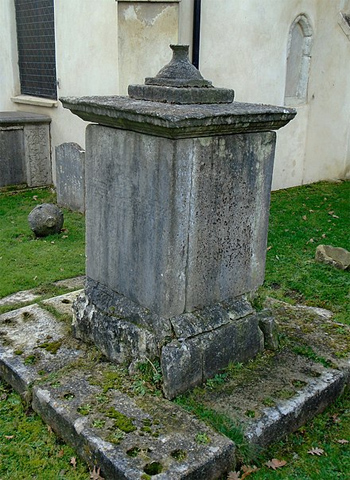
Halhed tomb, Petersham
Halhed lived on for another decade, without publishing anything further. His quiet life came to an end on 18 February 1830. He was buried in the family tomb of Petersham Parish Church.[23] At his death his assets were estimated to be around £18,000. Louisa Halhed lived for a year longer and died on 24 July 1831.[24]
Legacy
Halhed's collection of Oriental manuscripts was purchased by the British Museum, and his unfinished translation of the Mahabharata went to the library of the Asiatic Society of Bengal.[2]
Works
Halhed's major works are those he produced in Bengal, in the period 1772 to 1778.[3]
A Code of Gentoo Laws
Just before Halhed was appointed as writer, the East India Company's court of directors notified the President and council at Fort William College of their decision to take over the local administration of civil justice: the implementation was left with the newly appointed Governor, Warren Hastings. Hastings assumed the governorship in April 1772 and by August submitted what was to become the Judicial Plan. It provided among other things that "all suits regarding the inheritance, marriage, caste and other religious usages, or institutions, the laws of the Koran with respect to Mohametans and those of the Shaster with respect to Gentoos shall be invariably adhered to." No British personnel could read Sanskrit, however.[25]
Translation was undertaken and 11 pundits were hired to which an eleventh was added. Hastings envisaged making a text in English that contained the local laws. He intended to show the prudence of applying the Indian laws.
The pundits worked to compile a text from multiple sources, the Vivadarnavasetu (sea of litigations). It was translated to Persian, via a Bengali oral version by Zaid ud-Din 'Ali Rasa'i[???]. Halhed then translated the Persian text into English, working with Hastings himself. The completed translation was available on 27 March 1775. The East India Company had it printed in London in 1776 as A Code of Gentoo Laws, or, Ordinations of the Pundits. This was an internal edition, distributed by the East India Company. A pirate edition was printed by Donaldson the following year, followed by a second edition in 1781; translations in French and German appeared by 1778.
The book made Halhed's reputation, but was controversial, given that the English translation was remote from its original. It failed to become the authoritative text of the Anglo-Indian judicial system. Its impact had more to do with Halhed's preface and the introduction to Sanskrit than the laws themselves. The Critical Review wrote in London, September 1777, that:[26]
"This is a most sublime performance ... we are persuaded that even this enlightened quarter of the globe cannot boast anything which soars so completely above the narrow, vulgar sphere of prejudice and priestcraft. The most amiable part of modern philosophy is hardly upon a level with the extensive charity, the comprehensive benevolence, of a few rude untutored Hindoo Bramins ... Mr. Halhed has rendered more real service to this country, to the world in general, by this performance, than ever flowed from all the wealth of all the nabobs by whom the country of these poor people has been plundered ... Wealth is not the only, nor the most valuable commodity, which Britain might import from India."
Halhed in the preface stated that he had been "astonished to find the similitude of Shanscrit words with those of Persian and Arabic, and even of Latin and Greek: and these not in technical and metaphorical terms, which the mutation of refined arts and improved manner might have occasionally introduced; but in the main ground-work of language, in monosyllables, in the names of numbers, and the appellations of such things as would be first discriminated as the immediate dawn of civilisation." This observation was shortly to be heralded as a major step towards the discovery of the Indo-European language family.
The Gentoo Code (also known as A Code of Gentoo Laws or Ordinations of the Pundits) is a legal code translated from Sanskrit (in which it was known as vivādārṇavasetu) into Persian by Brahmin scholars; and then from Persian into English by Nathaniel Brassey Halhed, a British grammarian working for the East India Company.[1][2] Vivādārṇavasetu is a digest of Hindu law in 21 sections (taraṅga) compiled for Warren Hastings by the pandits.[3] The translation was funded and encouraged by Warren Hastings as a method of consolidating company control on the Indian subcontinent. It was translated into English with a view to know about the culture and local laws of various parts of Indian subcontinent. It was printed privately by the East India Company in London in 1776 under the title A Code of Gentoo Laws, or, Ordinations of the Pundits. Copies were not put on sale, but the Company did distribute them. In 1777 a pirate (and less luxurious) edition was printed; and in 1781 a second edition appeared. Translations into French and German were published in 1778. It is basically about the Hindu law of inheritance (Manusmriti).[4]The Manusmṛiti ... was one of the first Sanskrit texts to have been translated into English in 1776, by Sir William Jones, and was used to formulate the Hindu law by the British colonial government...
Over fifty manuscripts of the Manusmriti are now known, but the earliest discovered, most translated and presumed authentic version since the 18th century has been the "Kolkata (formerly Calcutta) manuscript with Kulluka Bhatta commentary". Modern scholarship states this presumed authenticity is false, and the various manuscripts of Manusmriti discovered in India are inconsistent with each other, and within themselves, raising concerns of its authenticity, insertions and interpolations made into the text in later times...
The title Manusmriti is a relatively modern term and a late innovation, probably coined because the text is in a verse form...
T]he text version in modern use, according to Olivelle, is likely the work of a single author or a chairman with research assistants.
Manusmriti, Olivelle states, was not a new document, it drew on other texts, and it reflects "a crystallization of an accumulated knowledge" in ancient India....
The text is composed in metric Shlokas (verses), in the form of a dialogue between an exalted teacher and disciples who are eager to learn about the various aspects of dharma....
The verses 12.1, 12.2 and 12.82 are transitional verses. This section is in a different style than the rest of the text, raising questions whether this entire chapter was added later. While there is evidence that this chapter was extensively redacted over time, however it is unclear whether the entire chapter is of a later era....
The structure and contents of the Manusmriti suggest it to be a document predominantly targeted at the Brahmins (priestly class) and the Kshatriyas (king, administration and warrior class).[34] The text dedicates 1,034 verses, the largest portion, on laws for and expected virtues of Brahmins, and 971 verses for Kshatriyas...
Chapter 7 of the Manusmriti discusses the duties of a king, what virtues he must have, what vices he must avoid. In verses 7.54 - 7.76, the text identifies precepts to be followed in selecting ministers, ambassadors and officials, as well as the characteristics of well fortified capital. Manusmriti then lays out the laws of just war, stating that first and foremost, war should be avoided by negotiations and reconciliations. If war becomes necessary, states Manusmriti, a soldier must never harm civilians, non-combatants or someone who has surrendered, that use of force should be proportionate, and other rules. Fair taxation guidelines are described in verses 7.127 to 7.137...
Sinha, for example, states that less than half, or only 1,214 of the 2,685 verses in Manusmriti, may be authentic. Further, the verses are internally inconsistent. Verses such as 3.55-3.62 of Manusmriti, for example, glorify the position of women, while verse such as 9.3 and 9.17 do the opposite. Other passages found in Manusmriti, such as those relating to Ganesha, are modern era insertions and forgeries...
There are so many contradictions in the printed volume that, if you accept one part, you are bound to reject those parts that are wholly inconsistent with it. (...) Nobody is in possession of the original text...
Scholars doubt Manusmriti was ever administered as law text in ancient or medieval Hindu society. David Buxbaum states, "in the opinion of the best contemporary orientalists, it [Manusmriti] does not, as a whole, represent a set of rules ever actually administered in Hindustan. It is in great part an ideal picture of that which ... ought to be law".
Donald Davis writes, "there is no historical evidence for either an active propagation or implementation of Dharmasastra [Manusmriti] by a ruler or any state – as distinct from other forms of recognizing, respecting and using the text. Thinking of Dharmasastra as a legal code and of its authors as lawgivers is thus a serious misunderstanding of its history".
-- Manusmriti, by Wikipedia
The Pandits and the Maulvis were associated with judges to understand the civil law of Hindus and Muslims.
Citations
1. Jones, William (9 November 2006). Sir William Jones, 1746-94: A Commemoration. The Lawbook Exchange, Ltd. ISBN 9781584776888 – via Google Books.
2. Chisholm, Hugh, ed. (1911). "Halhed, Nathaniel Brassey" . Encyclopædia Britannica. 12 (11th ed.). Cambridge University Press.
3. Halhed, Nathaniel Brassey (9 November 1776). A code of Gentoo laws, or, Ordinations of the pundits : from a Persian translation, made from the original written in the Shanscrit language. London: [s.n.] – via Trove.
4. Halhed, Nathaniel Brassey (1971). A Code of Gentoo laws, or, Ordinations of the Pundits. London. p. 96. Retrieved 9 November 2019.
See also
• List of ancient legal codes
External links
• A Code of Gentoo laws at archive.org
-- Gentoo Code, by Wikipedia
A Grammar of the Bengal Language
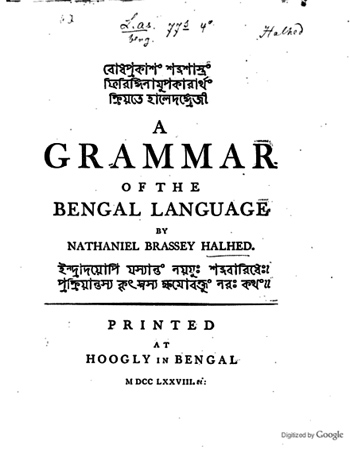
Scanning image of A Grammar of the Bengal Language, 1778.
The East India Company lacked employees with good Bengali. Halhed proposed a Bengali translatorship to the Board of Trade, and set out a grammar of Bengali, the salaries of the pundits and the scribe who assisted him being paid by Hastings. Difficulty arose with a Bengali font. Charles Wilkins undertook it, the first Bengali press was set up at Hugli, and the work of creating the typeface was done by Panchanan Karmakar, under the supervision of Wilkins.[27]
The grammar was the property of the Company, Wilkins informed the council on 13 November 1778 that the printing was completed, by which time Halhed had left Bengal. Halhed's Grammar was widely believed at the time to be the first grammar of Bengali, because the Portuguese work of Manuel da Assumpção, published in Lisbon in 1743, was largely forgotten.
Other works
Halhed's early collaboration with Richard Brinsley Sheridan was not an overall success, though they laboured on works including Crazy Tales and the farce Ixiom, later referred to as Jupiter, which was not performed. Halhed left for India. One work, The Love Epistles of Aristaenetus. Translated from the Greek into English Metre, written by Halhed, revised by Sheridan and published anonymously, did make a brief stir. The friendship came to an end, Elizabeth Linley chose Sheridan over Halhed, and later they were political enemies.
The opening of the Calcutta Theatre in November 1773 gave Halhed occasion to write prologues. A production of King Lear also spurred him to write more pieces. He produced humorous verse: A Lady's Farewell to Calcutta, was a lament for those who regretted staying in the mofussil.
Halhed wrote an anonymous tract in 1779 in defense of Hastings's policies with respect to the Maratha War. He began to write poetry, also, expressing his admiration for the governor, such as a Horatian ode of 1782. Under the pseudonym of "Detector" he wrote a series of open letters that appeared in newspapers, as separate pamphlets and in collections. These letters span over a year, from October 1782 to November 1783.
In the decade of Hastings's impeachment, Halhed remained involved in the war of pamphlets. The Upanisad (1787) was based on Dara Shikoh's Persian translation. He wrote and distributed a Testimony of the Authenticity of the Prophecies of Richard Brothers, and of his Mission to recall the Jews. Scandalously, he identified London with Babylon and Sodom: and was judged eccentric or mad.
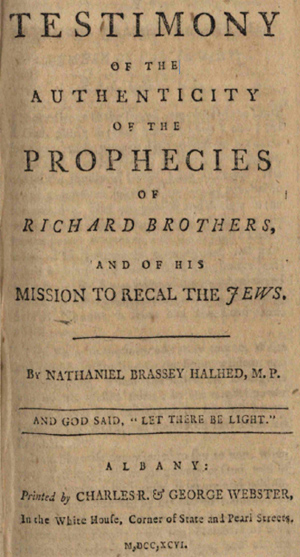
Testimony of the Authenticity of the Prophecies of Richard Brothers, and of His Mission to Recal the Jews, by Nathaniel Brassey Halhed, M.P.
And God Said, "Let There Be Light."
Printed by Charles R. & George Webster, in the White House, Corner of State and Pearl Streets
See also
• Gentoo
Citations
1. "Halhed, Nathaniel Brasssey". Biographical Dictionary of the Living Authors of Great Britain and Ireland. 1816. p. 142.
2. Chisholm, Hugh, ed. (1911). "Halhed, Nathaniel Brassey" . Encyclopædia Britannica. 12 (11th ed.). Cambridge University Press.
3. Rocher, Rosane. "Halhed, Nathaniel Brassey". Oxford Dictionary of National Biography (online ed.). Oxford University Press. doi:10.1093/ref:odnb/11923. (Subscription or UK public library membership required.)
4. s:Alumni Oxonienses: the Members of the University of Oxford, 1715-1886/Halhed, Nathaniel Brassey
5. Rosane Rocher (1983). Orientalism, Poetry, and the Millennium: The Checkered Life of Nathaniel Brassey Halhed, 1751–1830. Motilal Banarsidass. p. 37. ISBN 978-0-8364-0870-6.
6. Rosane Rocher (1983). Orientalism, Poetry, and the Millennium: The Checkered Life of Nathaniel Brassey Halhed, 1751–1830. Motilal Banarsidass. p. 38. ISBN 978-0-8364-0870-6.
7. Rosane Rocher (1983). Orientalism, Poetry, and the Millennium: The Checkered Life of Nathaniel Brassey Halhed, 1751–1830. Motilal Banarsidass. pp. 40–1. ISBN 978-0-8364-0870-6.
8. Rosane Rocher (1983). Orientalism, Poetry, and the Millennium: The Checkered Life of Nathaniel Brassey Halhed, 1751–1830. Motilal Banarsidass. p. 96. ISBN 978-0-8364-0870-6.
9. Rosane Rocher (1983). Orientalism, Poetry, and the Millennium: The Checkered Life of Nathaniel Brassey Halhed, 1751–1830. Motilal Banarsidass. pp. 92–6. ISBN 978-0-8364-0870-6.
10. Rosane Rocher (1983). Orientalism, Poetry, and the Millennium: The Checkered Life of Nathaniel Brassey Halhed, 1751–1830. Motilal Banarsidass. pp. 119–121. ISBN 978-0-8364-0870-6.
11. Rosane Rocher (1983). Orientalism, Poetry, and the Millennium: The Checkered Life of Nathaniel Brassey Halhed, 1751–1830. Motilal Banarsidass. pp. 121–2. ISBN 978-0-8364-0870-6.
12. C. H. Philips, The East India Company "Interest" and the English Government, 1783–4: (The Alexander Prize Essay), Transactions of the Royal Historical Society Vol. 20 (1937), pp. 83–101, at p. 90; Published by: Cambridge University Press on behalf of the Royal Historical Society. DOI: 10.2307/3678594 JSTOR 3678594
13. Sykes, John. "Sykes, Sir Francis". Oxford Dictionary of National Biography (online ed.). Oxford University Press. doi:10.1093/ref:odnb/64747. (Subscription or UK public library membership required.)
14. Rosane Rocher (1983). Orientalism, Poetry, and the Millennium: The Checkered Life of Nathaniel Brassey Halhed, 1751–1830. Motilal Banarsidass. pp. 125–6. ISBN 978-0-8364-0870-6.
15. Rosane Rocher (1983). Orientalism, Poetry, and the Millennium: The Checkered Life of Nathaniel Brassey Halhed, 1751–1830. Motilal Banarsidass. p. 131. ISBN 978-0-8364-0870-6.
16. Rosane Rocher (1983). Orientalism, Poetry, and the Millennium: The Checkered Life of Nathaniel Brassey Halhed, 1751–1830. Motilal Banarsidass. pp. 132–4. ISBN 978-0-8364-0870-6.
17. Rosane Rocher (1983). Orientalism, Poetry, and the Millennium: The Checkered Life of Nathaniel Brassey Halhed, 1751–1830. Motilal Banarsidass. pp. 141–2. ISBN 978-0-8364-0870-6.
18. Rosane Rocher (1983). Orientalism, Poetry, and the Millennium: The Checkered Life of Nathaniel Brassey Halhed, 1751–1830. Motilal Banarsidass. p. 157. ISBN 978-0-8364-0870-6.
19. Rosane Rocher (1983). Orientalism, Poetry, and the Millennium: The Checkered Life of Nathaniel Brassey Halhed, 1751–1830. Motilal Banarsidass. pp. 168–9. ISBN 978-0-8364-0870-6.
20. Rosane Rocher (1983). Orientalism, Poetry, and the Millennium: The Checkered Life of Nathaniel Brassey Halhed, 1751–1830. Motilal Banarsidass. p. 214. ISBN 978-0-8364-0870-6.
21. Rosane Rocher (1983). Orientalism, Poetry, and the Millennium: The Checkered Life of Nathaniel Brassey Halhed, 1751–1830. Motilal Banarsidass. p. 216. ISBN 978-0-8364-0870-6.
22. Rosane Rocher (1983). Orientalism, Poetry, and the Millennium: The Checkered Life of Nathaniel Brassey Halhed, 1751–1830. Motilal Banarsidass. pp. 226–7. ISBN 978-0-8364-0870-6.
23. Fison, Vanessa (May 2015). "Nathaniel Halhed and his Descendants in Petersham in the Eighteenth Century". Richmond History: Journal of the Richmond Local History Society (36): 24–37.
24. Rosane Rocher (1983). Orientalism, Poetry, and the Millennium: The Checkered Life of Nathaniel Brassey Halhed, 1751–1830. Motilal Banarsidass. p. 228. ISBN 978-0-8364-0870-6.
25. Rosane Rocher (1983). Orientalism, Poetry, and the Millennium: The Checkered Life of Nathaniel Brassey Halhed, 1751–1830. Motilal Banarsidass. pp. 48 and 51. ISBN 978-0-8364-0870-6.
26. Dalrymple 2004, p. 40
27. Hossain, Ayub (2012). "Panchanan Karmakar". In Islam, Sirajul; Jamal, Ahmed A. (eds.). Banglapedia: National Encyclopedia of Bangladesh (Second ed.). Asiatic Society of Bangladesh.
References
• Dalrymple, William (2004). White Mughals: love and betrayal in eighteenth-century India. Penguin Books. ISBN 978-0-14-200412-8.
External links
Wikisource has the text of the 1885–1900 Dictionary of National Biography's article about Halhed, Nathaniel Brassey.
• Books by Nathaniel Brassey Halhed — archive.org
• Orientalism, poetry, and the millennium : the checkered life of Nathaniel Brassey Halhed, 1751-1830 by Rosane Rocher
• Islam, Sirajul (2012). "Halhed, Nathaniel Brassey". In Islam, Sirajul; Jamal, Ahmed A. (eds.). Banglapedia: National Encyclopedia of Bangladesh (Second ed.). Asiatic Society of Bangladesh.
• Excerpts of his notes on some Persian translations of Sanskrit texts were published by Hindley under the title Antient Indian Literature Illustrative of the Researches of the Asiatick Society, established in Bengal. 1807.
Attribution
This article incorporates text from a publication now in the public domain: Chisholm, Hugh, ed. (1911). "Halhed, Nathaniel Brassey". Encyclopædia Britannica. 12 (11th ed.). Cambridge University Press.


